Review of Star Trek: The Next Generation - Season 1 (7 Disc Boxset)
Introduction
After four days of intense trekking, here we are. I think it`s fair to say that I am something of a Star Trek fan. I must be, if I shell out for the DVD box set despite having the videos. It does have the benefit of saving on shelf space as well as having my favourite Sci-fi show on durable DVD rather than fragile tape. Star Trek has a lot of pull in Hollywood, not least because of the considerable fan base. A normal show, especially now would have only a season, if not just a few episodes to establish itself, otherwise it would be dropped from the schedules. Star Trek fans on the other hand managed to resurrect a cancelled show and turn it into the most repeated show in history. Not only that, but there was a short-lived animated series and finally, when the clamour for a new series wouldn`t die down, a motion picture. Three sequels rapidly followed this, but the demand for a new television series never lessened and finally in 1987, Star Trek: The Next Generation aired. The first season, to put it mildly was mediocre. It took a long time to settle, and without the Star Trek name, it would most likely have been cancelled, but it took its time, and after a couple of faltering years, it became the phenomenon that we know so well. I`ll try and get through this review without dropping into Trek Speak and rather concentrate on the stories, but forgive me in advance for the occasional lapse.
It is the 7th decade of the 24th Century. 100 years have passed since Kirk first boldly went and some 70 years since the last Kirk movie. The Federation has expanded. The galaxy is divided into four quadrants rather than sectors. The warp scale has been redefined from a geometric scale to an exponential one, where Warp 10 corresponds to infinite velocity and fractional increments over Warp 9 correspond to phenomenal leaps in velocity. This stops Captains saying something ridiculous like "set speed to Warp 63" and rather keeps it under control of the scriptwriters. The Federation are at peace with the Klingons and the Romulans are keeping quiet. The big scary guys are a mysterious race called the Ferengi and are dangled like the Sword of Damocles over further Federation expansion. Starships are more like cruise liners and now carry families aboard, with holodecks to provide entertainment in the crew`s copious leisure time. Money is a thing of the past and no one goes hungry anymore. Replicators provide everything a man could want and the people of the Federation live in a utopia of Technology Unchained. (Those of you who revel in the minutiae of continuity would do well to take any comparisons between the series with a pinch of salt. Scriptwriters are driven by the story first and pay little attention to consistency in their universe. Events and occurrences in the Shatner era have little bearing on the world constructed for the 24th Century. Aliens differ, terms and practices differ even backstory can change from one episode from the next. As long as the general feel of the show is consistent one week from the next, that is all that matters)
The Episodes
Most of episodes in the first season were either rehashes of original series episodes or dusted off scripts for the Phase II series. As a result, they weren`t all of top quality. I`ve reviewed them with a mark out of 10 for content.
1. Encounter at Farpoint
The 90-minute pilot episode, where we are introduced to the universe of the Next Generation. The Enterprise has been assigned to investigate Farpoint Station, a starbase constructed by the Bandi of Deneb IV for Starfleet. On the way there, they are interrupted by an omnipotent being Q, who threatens them if they can`t solve the mystery of Farpoint Station. This pilot is adequate in introducing the regular cast and the new ship, and the story, while not astounding is at least entertaining, if a little long. The good point in this show is the introduction of John De Lancie as Q, an always-entertaining nemesis. Also guesting are Colm Meaney, in his first appearance before his regular casting as O`Brien and DeForrest Kelley reprising Dr McCoy as a means of passing the torch. 7/10
2. The Naked Now
Investigating the collapse of a Red Giant star, the crew of the enterprise become infected by an intoxicating disease that leaves the ship destined for destruction. Seems familiar? The Naked Now is an overt remake of the Original series episode The Naked Time. Whereas the Original series was established enough that showing the crew, intoxicated and free of inhibitions was a good way of subverting the characters, here it is too soon for that as the Next Gen characters aren`t properly established. Add to that it`s a blatant copy and at the end, Wesley saves the day. Naff but entertaining. 4/10
3. Code of Honor
Negotiating for a vaccine with the Ligonians takes a turn for the worse when the Ligonian leader kidnaps Tasha Yar. To earn her freedom, she must fight his first wife in mortal combat. This is a really bad episode. As well as being remarkably reminiscent of Amok Time, where Kirk fought Spock to the death over a woman, far worse is the degree of racial stereotyping that is apparent in the Ligonian culture. It`s really out of place in a show that broke so many cultural boundaries as Star Trek and whether it is accidental or not, it is still a touch offensive. 3/10
4. The Last Outpost
Chasing a Ferengi ship, the Enterprise and her foe, become trapped in orbit around a barren world. Losing power, they agree to cooperate and investigate the energy readings from the planet below. There they meet the Portal, who has been guarding the Tkon Empire, despite its destruction millennia previously. This is a good show that establishes the characters well in the face of adversity. The Tkon Portal is an intriguing character that provides a decent challenge to the Enterprise crew. The only downside is the Ferengi, who up till now have been touted as the galactic bad-asses, but turn out to be bat-eared, door-to-door salesman. The first season suffered from the lack of a suitable foe and the Ferengi were no substitute. Making his first Ferengi appearance was Armin Shimerman, before he found regular Ferengi work as Quark. 8/10
5. Where No One Has Gone Before
An arrogant Starfleet scientist and his enigmatic alien companion come aboard the Enterprise to tune its warp engines, but the tinkering sends the ship to the ends of the universe. Only the alien can take them back, but he is dying. Another decent episode based on the novel, The Wounded Sky by Diane Duane. There is more character exposition as well as an entertaining story. An interesting path is opened in Wesley`s character that unfortunately isn`t explored until the final season, and he gets promoted to Acting Ensign, making him an incongruous regular on the bridge. Other than that, this story is a winner. 8/10
6. Lonely Among Us
On a diplomatic mission, a chance encounter with an energy cloud results in a stowaway desperate to get back. Possessing one after another, it finally joins with the Captain in an attempt to return. There is a secondary storyline regarding the delegates on the ship, but that gets lost in the background as the main story takes precedence. The cast are relaxing in their roles as Data first dons the persona of Sherlock Holmes. The story itself starts strongly but seems to tail off listlessly and it`s only through a contrivance with the transporter that they save the day. Marc Alaimo makes his first Trek appearance buried in make up as one of the delegates. He`ll later be Gul Dukat. 6/10
7. Justice
The Enterprise finds a planet full of promiscuous hedonists governed by a mysterious space station that they worship as God. When Wesley breaks a law and is sentenced to death, Picard must argue his case. Oh God this episode is dire. Again it`s heavily influenced by the original series show, The Apple but this has to be the least moralistic episode. Scantily Clad inhabitants, making love at the drop of the hat, there is so much flesh here that it feels more like an episode of Benny Hill. Gene Roddenberry`s sixties sensibilities are highly apparent here and it`s hard to believe now this is a Next Gen episode. Fortunately there aren`t too many like this. On the plus side, Worf starts a trend of memorable one-liners. 1/10
8. The Battle
Picard is plagued by headaches when the Enterprise again encounters the Ferengi. The Ferengi Captain wishes to give Picard his old ship, the Stargazer as a gift, but when Picard starts hallucinating, the Enterprise is placed in mortal danger. The cast is comfortable in their roles by now, and the performances are generally sound. The Battle is a compelling story where Picard`s past comes back to haunt him. This is a fast paced and thrilling 45 minutes, where the only downside is again the clown-like Ferengi. 9/10
9. Hide and Q
Q returns to subject the Enterprise crew to another of his torments. This time the redoubtable Commander Riker has piqued his interest, and when he dangles the carrot of the Q`s powers, Riker finds it hard to refuse. I really enjoy the Q episodes, as John De Lancie has created an enthralling character that has much of the energy and verve that is occasionally lacking in other Season 1 episodes. It`s always fun to watch Q toy with Picard and this is no exception. 8/10
10. Haven
While visiting the idyllic planet, Haven, the Enterprise is visited by Lwaxana Troi, Deanna`s mother and the Miller family. Deanna is betrothed to Wyatt Miller and the time for the marriage is nigh. Problems occur when a plague ship enter the system asking for Wyatt. As well as Q, one Next Gen character has always been a source of considerable entertainment, the irrepressible Lwaxana Troi as played by Star Trek veteran, Majel Barrett Roddenberry. The sheer verve and panache that she brings to the role is outstanding. This episode clearly helped to define Deanna`s character and provided a welcome respite from the usual empathic claptrap that was the Troi`s contribution in the first season. Another plus point is the valet Mr Homn, who has an incredible appetite for alcohol. The story is a little mundane though. 7/10
11. The Big Goodbye
A recreational sojourn in the holodeck goes wrong when a malfunction traps the Captain and his associates in a 1940`s gumshoe novel. This was definitely a stand out episode for the first season. The idea of the holodeck malfunction makes its first appearance here, before it became a staple filler episode for all three recent Star trek series. By now the characters are comfortably settled and taking them into another environment and subverting the norm makes for a good episode. The film noir take off works really well, with character actor Lawrence Tierney playing kingpin Cyrus Redblock, and a half decent Peter Lorre impersonation. It also goes deeper and raises the questions of existence. One worth watching. 9/10
12. Datalore
We learn more about Data`s origins when the Enterprise visits Omicron Theta, the world where Data was discovered. But when Data`s disassembled brother Lore is found and reactivated, the ship is placed in great danger. Another good episode provides insight into Data`s character and history. Actor, Spiner, carries the dual role off well. 8/10
13. Angel One
The Enterprise sends an away team to a planet where gender roles are reversed in search of survivors of a freighter accident. Meanwhile the ship`s crew is afflicted by a debilitating illness. Back to the depths of script hell as we explore sexism and prejudice in an `ironic` way. Riker is seduced by the planets leader and has to play a submissive role in the relationship. I`m sorry, it just seems tacky to me. Another illness is contrived on the ship to provide dramatic tension, worth it to hear Worf sneeze in 5.1-surround sound. This isn`t a memorable episode. 5/10
14. 11001001
While Riker and the Captain are distracted in the holodeck, a group of aliens steal the empty Enterprise. You know that a cast has gelled and are comfortable in their roles when shows like this are written. Here most of the cast are seen off duty, relaxing, pursuing other interests and it truly seems like an ensemble piece. The effects are definitely improving and the quality of the script is excellent. This is truly evidence of better things to come. 8/10
15. Too Short A Season
When a Federation ambassador is taken hostage, the Enterprise is assigned to take an aged Admiral to negotiate the release on a planet where he had successfully negotiated before. The Admiral, feeling betrayed by his infirmity takes an overdose of an alien de-aging drug. This again is a powerful story, concerning betrayal, the search for a fountain of youth and revenge. Unfortunately the effects let it down, with the aged Admiral`s make-up leaving a lot to be desired, something that is ironically more apparent on DVD. 8/10
16. When The Bough Breaks
The Enterprise is investigating a legendary planet when the dying inhabitants kidnap several children to repopulate the planet. This is a fairly solid story, showing the perils of pollution, but as with many films that have children prominent in the storyline, the show stands or falls on the talents of the child actors. 6/10
17. Home Soil
Terraforming of Velara III goes tragically wrong when a scientist dies in mysterious circumstances. When the Enterprise crew investigates, they find what could be a new life form. This in many respects is a remake of the old episode, Devil in the Dark and adds little new to the genre. It`s a shame really, as terraforming is such a staple sci-fi convention that a greater visual impact would have helped, unfortunately this episode is studio bound. 7/10
18. Coming of Age
While Wesley takes the entrance exam for Starfleet Academy, Admiral Quinn investigates Captain Picard with regards to a potential conspiracy in Starfleet. By now, the programmes makers had realised that there was a certain bite lacking in the storylines. The Ferengi as the nemesis of the Federation were laughable and from now, stories were introduced that attempted to add a little drama and tension to the show. The conspiracy raised here was a case in point. The idea of a malignancy in Starfleet would be the first attempt at a long running story thread. Other good points include a decent and credible story for Wesley and the interrogation of Picard`s bridge crew building on the crew`s relationships. 7/10
19. Heart of Glory
When Klingon dissidents are rescued from the Neutral Zone by the Enterprise, Worf`s loyalties are called into question. Another potential foe for the Federation is reintroduced in the shape of the Klingons. This is Worf`s show and a lot of his back-story and personality is filled in. 7/10
20. The Arsenal of Freedom
Investigating the disappearance of the USS Drake, the Enterprise visits the planet Minos, a world of arms dealers that is now devoid of life. With most of the bridge crew trapped on the planet battling an automated weapons system, Geordi La Forge is left in command of the Enterprise facing attacks from within and without. A good episode for Geordi who gets an exciting storyline and Dr Crusher gets some insight into her character. The story is quite exciting too. 8/10
21. Symbiosis
The Enterprise comes between two worlds, a planet of drug addicts and a planet of their dealers. Picard must be very creative with the Prime Directive to resolve the situation. This is Star Trek at its most preachy. Tasha forcefully puts across a blatant anti-drugs message with a nauseating lecture to Wesley. The Star Trek crew sing "Just Say No". This is a solid, if uninspiring episode. 6/10
22. Skin of Evil
When Counsellor Troi`s shuttle crashes on an obscure planet, an away team beams down to rescue her. Tasha Yar is killed by a strange viscous entity that takes Deanna hostage and proceeds to sadistically torment the Enterprise crew. For most of the first season, Tasha`s character had little to do but open hailing frequencies and fire the occasional phaser. Whereas the other cast members had the occasional episode that developed their characters, the same wasn`t true for actress Denise Crosby. Consequently, when she decided to leave, the producers took the unprecedented step of killing off her character. This had the added bonus of investing emotional resonance in the story and shocking a complacent audience. Ironically this is one of Tasha`s more outstanding episodes and her final message is touching but never schmaltzy. The rest of the cast rise to the challenge and make this a moving and excellent episode. 9/10
23. We`ll Always Have Paris
When Paul Manheim`s experiment in time goes badly wrong, the Enterprise must go and repair the damage. But Manheim`s wife is an old flame of Picard. It`s back to the stinkers as the writers try to inject a little romance for Picard. There is no chemistry between them and the romance is woefully underwritten. This so-called bittersweet relationship is lost in the story about the crack in time. As a result neither story is satisfying. The effects are nice though. 4/10
24. Conspiracy
A sort of sequel to "Coming of Age", the alleged conspiracy is proven when Picard`s friend Walker Keel is killed when his starship, the Horatio is destroyed in ominous circumstances. Investigating, the Enterprise returns to Earth to find the conspiracy is more extensive than anyone could have thought. A good dramatic story but there is a problem with the ending, when Picard and Riker abandon their vaunted Federation principles in favour of a decent ray gun. 8/10
25. The Neutral Zone
The final episode of the first season sees homage to the original series episode Space Seed. The Enterprise finds a group of 20th Century survivors cryogenically frozen in deep space. While they are revived and become acclimated to the future, the Enterprise heads for a confrontation with the Romulans. This is a story, which while a little disjointed, is heavy on the tension and pace. The recovery of the frozen humans is a minor plot point that dominates the more important story. Again trying to set up a decent enemy, the Romulans are re-introduced, but more importantly, the Borg are set up in the script as the mysterious unknown power. This episode also has a rather lacklustre ending, but still remains enjoyable. 8/10
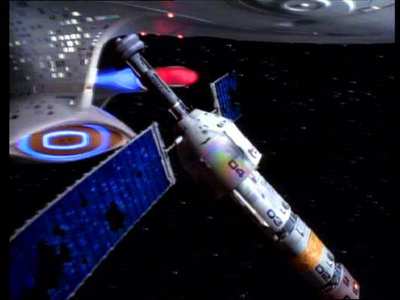
Video
In terms of the DVD, I was not really expecting much improvement in the video quality on the disc compared to VHS if simply because of the lower resolution of the US television system, 525 as opposed to 625 lines in the UK. And as expected, the image is not all that sharp. In common with the X-Files discs the picture has a small degree of granularity, which I assume is due to the differing resolutions, but the picture is still a significant improvement on the VHS. The picture is noticeably sharper and the colours crisper. I noticed the grain in the leather of the chairs that was never apparent before. The effects again are clearer and in a rare few cases, ropier. The film stock has aged though, and a few scratches were apparent. It`s hard to remember that 15 years ago, CGI was a glint in a programmer`s eye and all the TNG shots were done optically. That meant copious usage of stock footage and low budget effects whenever possible. The kinds of expansive mass starship battles we expect from our sci-fi would be beyond most movie budgets back in 1987, let alone a weekly television show.
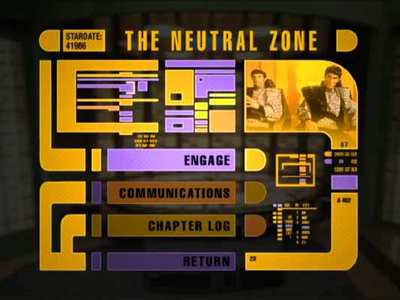
Audio
The sound has been significantly improved in its remastered glory. You are immersed in the episodes as never before. With the speakers rumbling in sympathy all around you, you feel as if you are on the Enterprise, the effects are more expansive and a lot of opportunity has been taken to bring the sound up to date. This isn`t to say that it is like watching a movie. This is still a television programme at heart and while advantage has been taken of modern technology, the budgets for sound effects and music remain distinctly mired in the eighties.
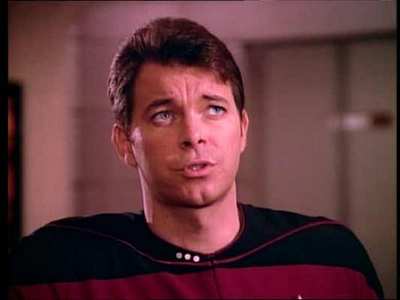
Features
The seven discs are placed in a very flimsy digipack, about the size of a CD case. This then slips inside a silver embossed card wrapper. This is then placed in a sturdy Tricorder type plastic case. By and large the packaging is of high quality. There is a 16-page booklet introducing us to the world of the Next Generation. On the discs, as well as multiple languages and subtitles, there are an hour worth of extras on the seventh disc. The Beginning shows the conception and initial realisation of the series through interviews with the cast and crew. Selected Crew Analysis looks closer at the cast members, again through interviews. The Making Of A Legend shows the behind the scenes of the series, the sets, props and special effects. Memorable Missions has the cast and crew choose notable episodes from the first season. I`ll be honest. The extras suck. The biggest Sci-fi TV show in the world and you get a measly hour of interviews. There is close to 20 hours of programming that can be analysed and discussed, but we get no episode commentaries, no outtakes, no deleted scenes, no TV spots, no DVD Rom content. There is so much that can be told about this show, but what we get is the usual PR guff that many of us have heard before. There is not enough to satisfy a fan, but the kind of people who would be satisfied with this meagre offering wouldn`t go anywhere near a Star Trek show. Paramount can take a leaf out of Fox`s book and try and emulate their X-Files box sets.

Conclusion
The first new Star Trek series in 20 years introduces us to a host of new characters to boldly split their infinitives. The Captain of the 5th Starship Enterprise is Jean Luc Picard as played by Patrick Stewart. The calm and dignified Frenchman is a philosopher king of his Starship domain and with thought and insight solves the problems that confront him. The casting of Patrick Stewart was an excellent choice as he displayed the charisma and strength of character necessary to carry the series and his personality carried the series on its first faltering steps. Jonathon Frakes plays the baby-faced first officer, Will Riker. Frakes took a little time to settle into his role but in the first few episodes, his relationship to the Captain develops, his relationship to Troi does tend to go nowhere however. Marina Sirtis as Deanna Troi must have had the patience of Job with her role. For pretty much the first season, all she had to do was report on her feelings. With her hair in a ridiculous bun, it`s no surprise that most of the feelings were negative, but with a few flashes of personality in the first season, she would eventually get an expanded role with more character. Brent Spiner got Data settled very early on. The decision to have the android innocent at first but learning slowly about humanity is immediately apparent, with Data twitching mechanically from the off, but rapidly adopting some endearing attributes. LeVar Burton seemed comfortable in his role as Geordi La Forge from day one and his character was rapidly established. Gates McFadden as Doctor Crusher was introduced with a history with Captain Picard, but again it took a few episodes for her role to become apparent and even still, the bosses would be unhappy with her role and the actress would take a year off during the second season. Denise Crosby and Michael Dorn as Tasha Yar and Worf respectively would have little to do but espouse battle, only to be countermanded by the Captain in favour of diplomacy time and again. This was especially apparent in the first episodes. But whereas Worf`s character was expanded as we learnt more about his Klingon heritage, little else would happen to Tasha Yar and it`s understandable that Denise Crosby left at the end of the first season, never to return save for the occasional guest appearance. Finally, Wil Wheaton as Wesley Crusher, surely the most reviled television character in history. I can still recall the newsgroup, wesleycrusher.die.die.die being heavily subscribed to in the early nineties. You have to remember that this show was BB, Before Buffy and American TV wasn`t used to developing a teenager in a show like this. As a result the character of Wesley Crusher was poorly written for and inadequately used. Here was the perfect teenager, with brilliant grades who got everything right, sitting on the bridge of a Starship. He didn`t smoke, didn`t drink, kept away from girls and had no problems whatsoever. What`s worse is that he saved the ship, more than once when the adults didn`t have a clue. A decent storyline was initiated in Where No One Has Gone Before, but wasn`t developed until the final seasons, when Wesley finally developed a character.
Watching the early episodes of TNG, I`m struck with a curious thought. In terms of appearance and sound, they have more in common with the original series than they do with the latest episodes of Voyager, say. The sets are quite shaky and planet bound settings are so obviously a studio that it looks ridiculous now, there are a couple of shaky camera operators as well. The music too has more in common with the Kirk episodes than the orchestrations we are used to now. The early episodes where the show is still finding its feet would rely on regular blasts of the Star Trek fanfare and now sound a tad ridiculous.
I`m going to commit blasphemy here, but I must say that I was never that fond of Gene Roddenberry`s vision for the 24th Century. The Original series rightly became a classic and fits in well with the social climate of the sixties. A gung ho Captain and his plucky crew going forth on implausible adventures week after week fit in well with the audiences of the sixties, but for his vision of the 24th Century as it related to the late eighties and early nineties, Roddenberry envisioned an ideal utopia, where humans had reached some sort of perfection in their society. Greed, lust for power and hatred had vanished in the favour of some idyllic search for personal improvement. This is all well and good when it comes to the ideal future of the human race, but in terms of television drama it leaves a lot to be desired. The crew of the Enterprise-D were galactic do-gooders, who travelled the universe, talking things out and, in the best tradition of Sesame Street, co-operating to solve their problems. It took the passing of the reins to Rick Berman and co for some excitement and thrills to be injected into the Star Trek Universe and that wouldn`t happen for a season or two. Gene Roddenberry also had some rather old fashioned views on the sexes and again, while acceptable in the sixties, the appearance of the miniskirt in the eighties was distinctly out of place. In fact some social and cultural attitudes in the early episodes were unsavoury at best and downright misogynistic at worst. I refer of course to the dire, Justice.
Star Trek the Next Generation Season One took a fair while to get going, but as the season progressed, the quality of the scripts improved, the effects got better and the show started to display a little promise. Looking back at the season, there are a fair few duffers, a couple of classic gems and some solid episodes. You can definitely see the seeds of promise in this season that are realised later on in the series.
I`m truly disappointed by the anorexic extras supplied with this release and only hope that the future sets will prove more satisfying. This is a promising start.
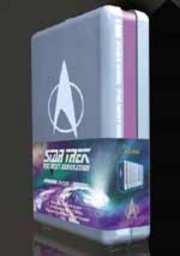
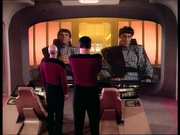

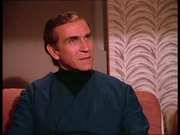
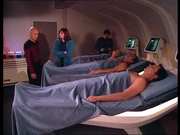



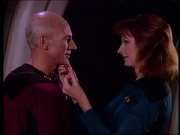

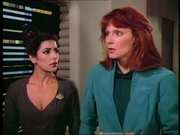
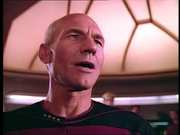
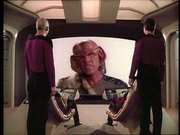
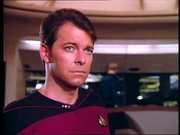

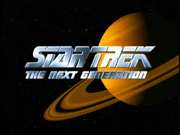
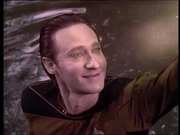
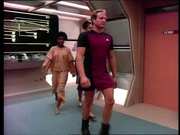
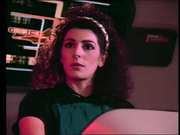
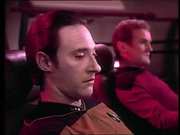
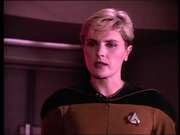
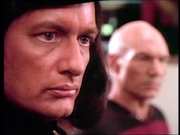
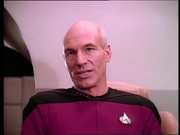
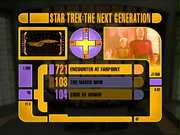
































Your Opinions and Comments
Be the first to post a comment!